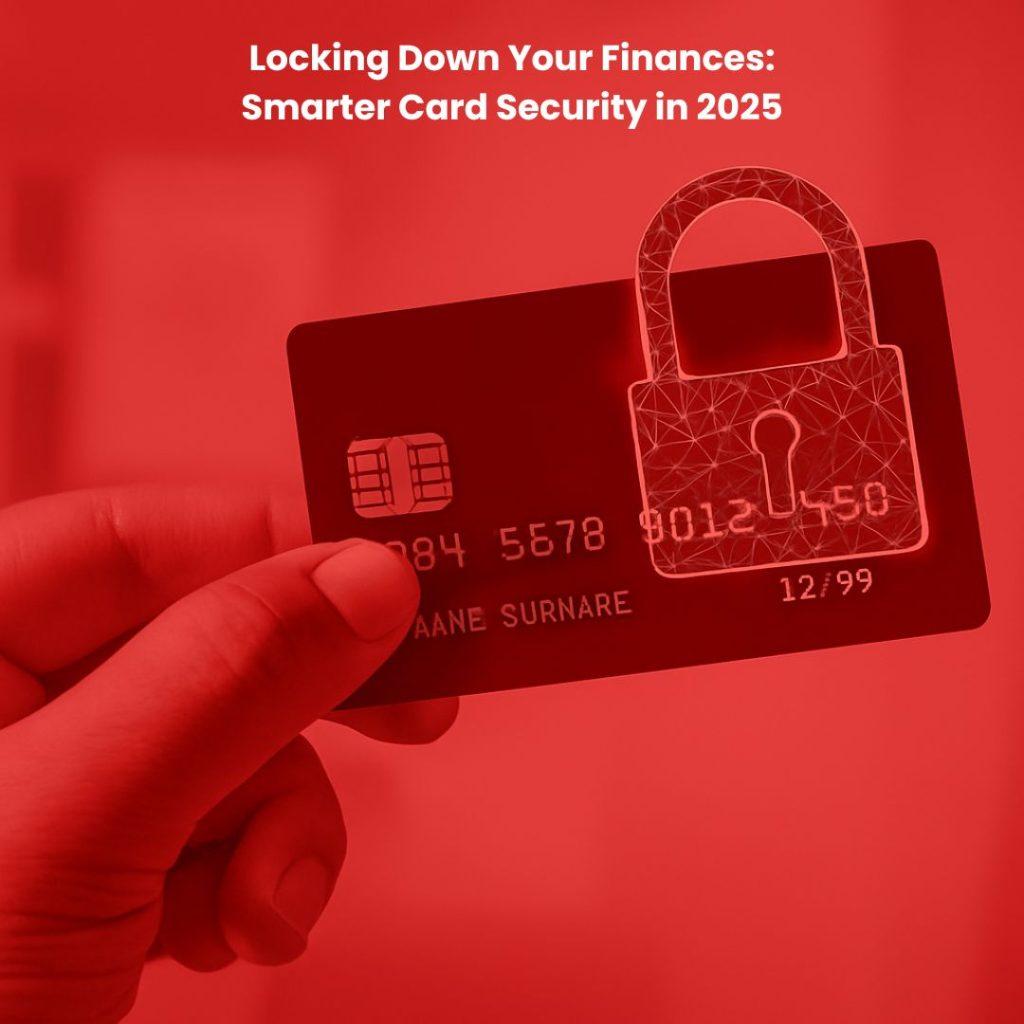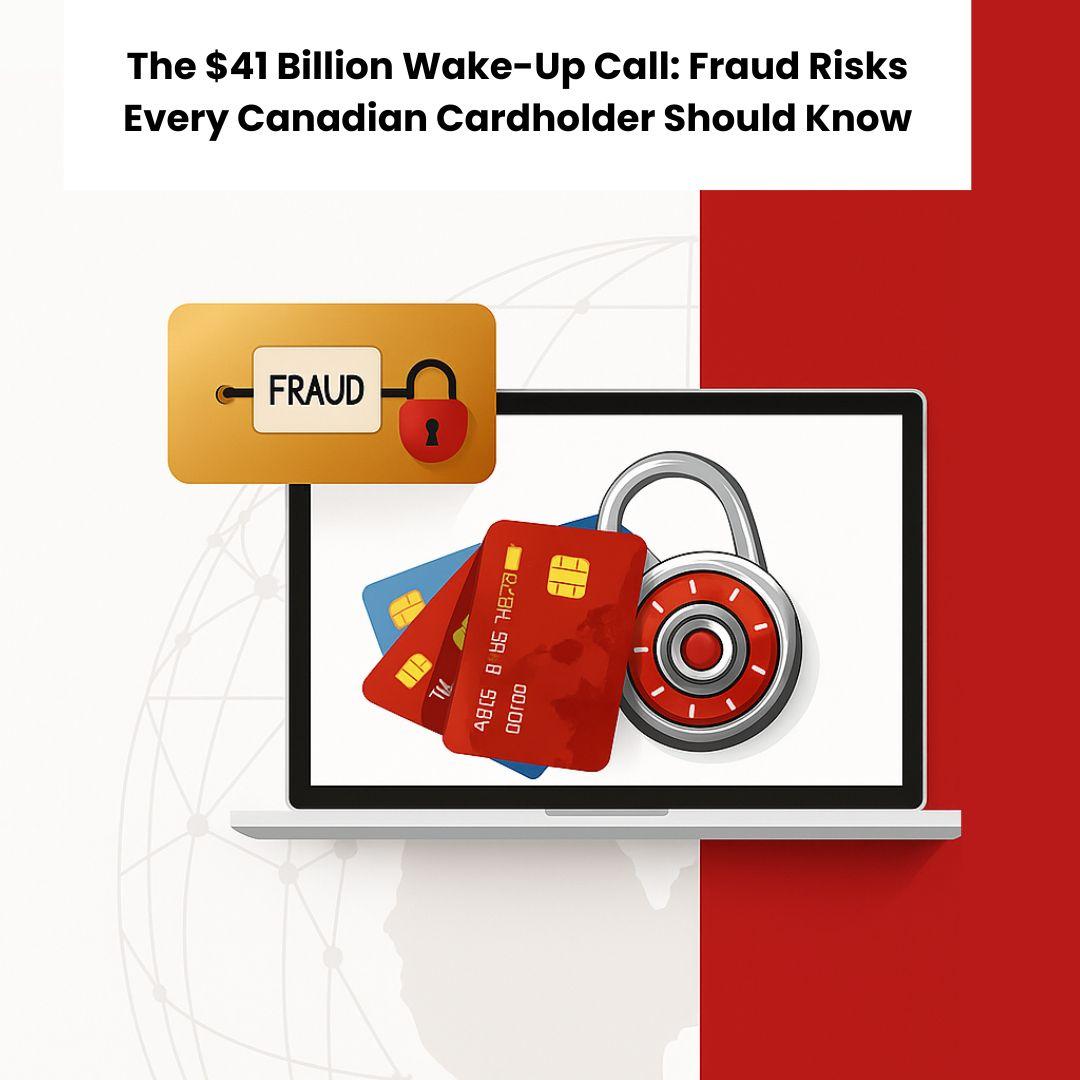It was a typical Tuesday morning when Jasmin from Ottawa sat down with her coffee and opened her banking app. That’s when she saw it—four unfamiliar charges, totalling $942.31. She hadn’t left her neighbourhood in three days. Her card was still in her wallet. The purchases were from across the country.
Jasmin had just become one of thousands of Canadians impacted by credit card fraud in Canada, and her story is far from unique.
In 2025, as digital payments become more embedded in our lives, scams have become more sophisticated, more frequent, and harder to detect. From AI-generated phishing texts to invisible tap-and-go theft, Canadians need to be more alert than ever. In this guide, we’ll explore how fraud is evolving this year—and how you can stay one step ahead.
Why Credit Card Fraud in Canada Is Escalating
Credit card fraud in Canada isn’t just about stolen wallets or fake websites anymore. It’s about algorithms, artificial intelligence, and deeply targeted deception.
According to the Canadian Anti-Fraud Centre (CAFC), credit card fraud reports rose by over 20% from 2023 to 2024, and the first quarter of 2025 is already on pace to break records. With AI tools now widely available to the public, fraudsters have stepped up their game. They can now automate scams, mimic human tone more convincingly, and spoof messages from legitimate institutions in seconds.
Digital convenience—like tap payments, online autofill, and embedded cards in mobile wallets—has increased the number of touchpoints fraudsters can exploit. Let’s break down the biggest scams affecting Canadians this year and why they’re especially effective.
AIDriven Phishing (Smishing, Vishing & Email)
AI tools can now produce phishing messages that look and sound exactly like your bank. The grammar is flawless. The logo is perfect. Even the phone number may appear identical to your institution’s.
Smishing—phishing through SMS—is on the rise, often prompting urgent messages like:
“Your credit card has been flagged. Click here to confirm your identity.”
One wrong tap and you’re taken to a cloned login page. From there, scammers harvest your credentials and quickly initiate fraudulent purchases or account transfers.
What’s even more chilling? Vishing (voice phishing) calls now use deepfake AI-generated voices. Scammers can make it sound like a real bank rep—adding a terrifying layer of legitimacy to the fraud.
Tap Fraud and Contactless Theft
Tap-to-pay is popular in Canada—some reports say over 70% of in-person transactions are contactless. That popularity, however, has opened the door to tap fraud.
With an NFC-enabled reader and a bit of stealth, a thief can skim your card data by simply standing next to you on public transit or in a crowded café. These transactions are often under $250, so they fly under the radar of most bank alerts.
While modern cards do offer encrypted protection, not all retailers and wallets have up-to-date technology—leaving you vulnerable.
Card Skimming at ATMs and Point-of-Sale Machines
Card skimming is still alive and well in 2025. Fraudsters install discreet devices on ATMs or POS terminals that capture the data from your card’s magnetic stripe. A hidden camera or fake keypad captures your PIN.
Once the information is obtained, your card can be cloned and used anywhere with outdated security standards.
Skimming is particularly prevalent at gas stations, corner stores, and unmonitored ATM kiosks—locations with minimal oversight and older machines.

Online Synthetic Fraud & Data Leaks
Even if you never fall for a phishing attempt, your information might still be exposed through third-party data breaches.
Retailers, delivery apps, and even some Canadian online banking platforms have experienced breaches in the past two years. Once your data is out, it’s often sold on the dark web, where scammers build synthetic profiles and apply for credit in your name.
It’s becoming harder to track because fraudsters often wait months before striking, making it difficult to connect the dots.
Friendly Fraud and Family-Based Scams
Not all scams are orchestrated by strangers. A surprising trend in 2025 is the rise of “friendly fraud.” This happens when a family member or roommate uses your card—either without permission or claiming they had verbal approval—and disputes the charge later.
While banks investigate, you may be on the hook for missed payments or have your credit score temporarily affected.
This type of fraud is also common with shared digital wallets, like family Apple Pay or Google Pay setups, where cards are stored but seldom monitored.
Who’s Most at Risk?
While credit card fraud in Canada can affect anyone, certain groups are more frequently targeted.
Seniors remain vulnerable to scams due to unfamiliarity with digital tech and a higher likelihood of trusting “official” messages. Meanwhile, young adults are often targeted through social platforms like Instagram, TikTok, or via fake job postings that require card details “for payment processing.”
Frequent travellers and online shoppers are also at increased risk due to the volume of transactions and exposure to third-party vendors.
Even tech-savvy professionals have been caught off guard by AI-generated phishing messages that mirror legitimate workflows.
How Canadians Can Protect Themselves in 2025
Protection starts with awareness—but it doesn’t end there. As credit card fraud in Canada becomes increasingly sophisticated in 2025, Canadians must adopt a layered approach to safeguard their financial information. Here are essential, real-world strategies to keep your cards—and your identity—safe.
Use Physical Protection
Tap-to-pay and contactless payments offer convenience, but they also open the door to stealthy forms of theft. One of the simplest and most effective defences is carrying your cards in an RFID-blocking sleeve or wallet, which helps prevent unauthorized skimming by nearby devices. If you don’t use the tap function, consider disabling it altogether through your bank app or by calling your issuer.
When you’re in crowded areas—public transit, concerts, or festivals—never keep your credit card in an open or loose pocket. Cards should be securely stored in a zipped compartment or close to your body, reducing the risk of accidental loss or contactless skimming.
Secure Your Online Activity
Many cases of credit card fraud in Canada originate from digital vulnerabilities. Enable two-factor authentication (2FA) for all financial apps and email accounts associated with your banking. This adds an extra layer of security, requiring more than just your password to log in.
Avoid storing card details in your browser or shopping accounts, especially on shared devices. A password manager can help you generate and safely store strong, unique passwords for every account you use—making it harder for hackers to break in using credential-stuffing techniques.
Review Statements Frequently
You shouldn’t wait for your monthly statement to detect fraud. Instead, check your credit card app at least once a week, if not more. Most banks in Canada allow you to set up instant transaction alerts, notifying you every time your card is used.
Watch for small, unusual charges—like a $1.50 transaction from a merchant you don’t recognize. These are often “test” charges used by fraudsters to verify if a card is active before launching a larger attack.
Report Fraud Immediately
Most credit card issuers in Canada offer a zero-liability policy, meaning you won’t be held responsible for unauthorized transactions. But prompt reporting is key. The sooner you notify your bank, the faster they can block your card, investigate the charges, and issue a replacement.
Delays may not only affect your refund but could also impact your credit report if the fraudulent activity goes unchallenged.
Trust Your Instincts
In today’s AI-driven scam landscape, trusting your gut is more important than ever. If a message, call, or checkout experience feels off—even slightly—pause and verify. Never click on links in unsolicited texts or emails, even if they appear to be from your bank.
Instead, contact your financial institution directly using the phone number on the back of your card. Your intuition is often the first and best line of defence.
Final Verdict: Stay Informed, Stay in Control
The evolution of credit card fraud in Canada is a warning and an opportunity. It reminds us that the conveniences we love—tap payments, mobile wallets, online checkout—must be matched with modern defences.
Don’t let convenience make you complacent.
By understanding today’s scams, securing your cards both digitally and physically, and acting quickly when things feel off, you can protect not just your finances—but your sense of security.
The fraudsters are adapting. So should we.
Apply For Top Cash Back Credit Cards in Canada
Searching for the best rewards credit card in Canada can be difficult. This is where Great Canadian Rebates comes into the picture. It is your go-to platform for comparing and choosing the ideal cash back credit card in Canada. Membership is free, and you gain access to 700+ popular merchants, along with fantastic rebates, deals, and discounts.


